Is there a more confident, polished, completely self-satisfied city than Bern, Switzerland?
It’s not just that it’s the “Federal City” (please don’t say “capital”) of a famously wealthy and orderly country, the meeting point among its French, Italian, and German identities. It’s not just the long history of sovereignty, not just as a city but over a vast canton reaching to the summits of the “Bernese Alps”. It’s not just the fresh, cold water falling into pools all over the old town.
It’s that nothing about it seems accidental, as some aspect of most cities does. Everywhere I looked I saw design, intention, control.
So when a frequent trolleybus takes me past cornfields, I know someone intended this.
I noticed this odd shape of Bern first when we climbed its highest hill, the Gurten, and looked down:
Many well-planned European cities have hard edges, with ten-story buildings looking directly out on farms, but it’s not as common to see farmland so completely surrounded by the city, so that urban infrastructure, such as frequent public transport, will waste some of its capacity serving a place with no demand.
But the frequency! While we were at a cafe in the old city I kept wanting to photograph how incredibly often the trolleybuses were coming by. One seemed to always be at the stop. But of course, you can’t photograph frequency, and all I got was photos of a very nice bus.
Switzerland, like much 0f Europe, is very sentimental about agriculture. Around the Paul Klee Center, a major museum devoted to the early 20th century painter, still more expensive urban land was devoted to corn, with an interpretive sign of course.
But every city sets aside land for some ceremonial purpose, so if agriculture is what people want to see from their frequent buses, it’s what they should have. Even the old city has steep terraced slopes that have been gardens for centuries:
If you are anywhere near, I do recommend Bern, a walkable historic city on a dramatically fast-moving river. If you need transport things to do, there are funiculars, sleek modern trams, and abundant trolleybuses. For true access geeks, there’s also the half-hourly event at the rail station when trains in all directions are there at once and leave within a few minutes of each other, an aspect of the famous “clockwork” nationwide rail schedule.
And don’t miss the opportunity to notice how similar they want the trams and buses to feel, so that you don’t develop attachments to technologies but just use whatever goes where you’re going.
But then, just walk. Indeed, if you walk far enough, a pleasant city street may turn into a Wanderweg, the network of hiking trails that laces the whole country, which are so popular that you may find a little shop selling coffee or cheese by the path far from any road. These trails, too, are part of the romance of agriculture. While I was there, someone on Twitter was going on about how poor Europe is and mentioned that it has nothing like American national parks. Yes, Europe has long been so thickly settled and cultivated that has few wild areas on the scale of Yosemite or Yellowstone. What it has instead are hiking trails everywhere, and a population that sees walking through scenic agricultural land as a valid kind of recreation.
These last images are from Mürren, a recreational area with national-park-level scenery high the Bernese Alps, still part of the proud Canton of Bern. But this kind of infrastructure is everywhere in Switzerland. And of course there are also trains and buses, even in rural areas.
I’m a little reluctant to praise Switzerland for such abundant rural service, fashionable as that is, because it’s something you can do only if you have enough money. Most countries have to economise more, and so they face the fact that however much they would like to provide access to rural areas, the demand there is usually so sparse that it is not something you do if you want to attract many riders.
But Switzerland does have the money to spend on this. They can even afford to run frequent urban trolleybuses to cornfields. And who am I to judge?
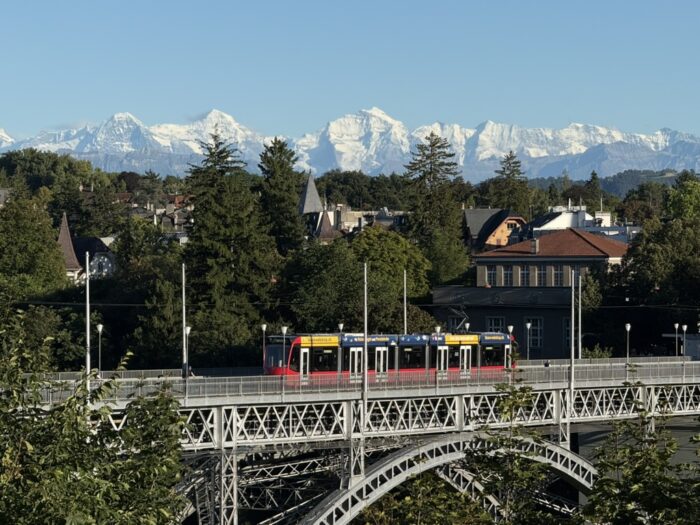
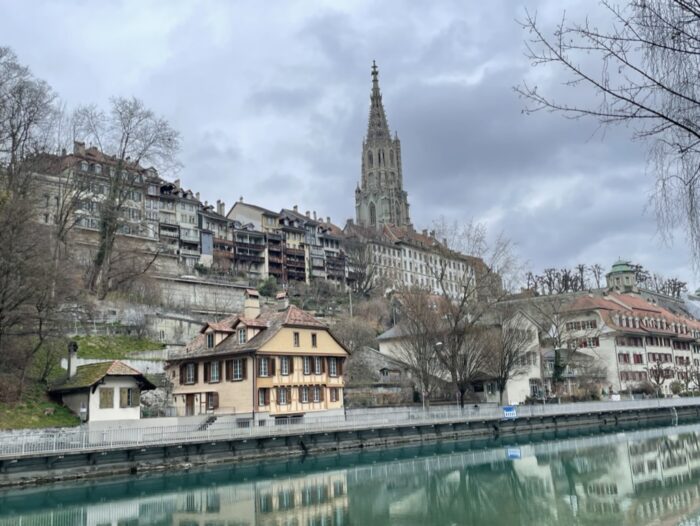
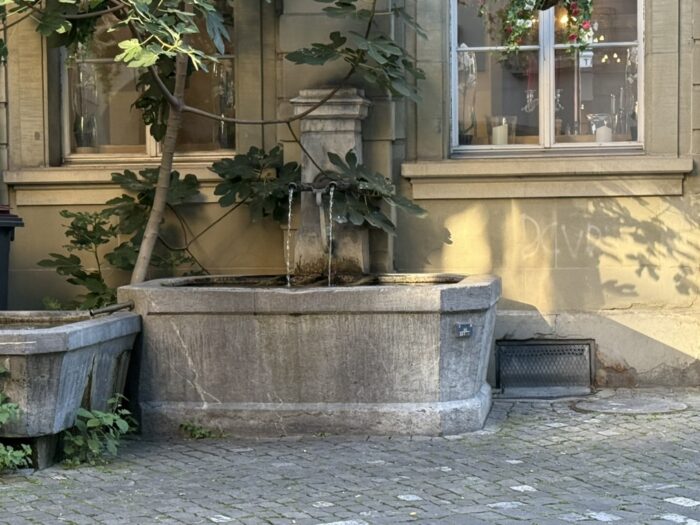
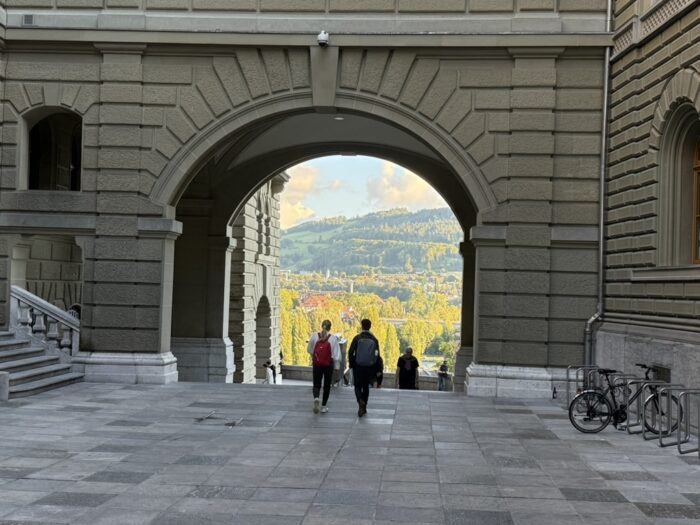
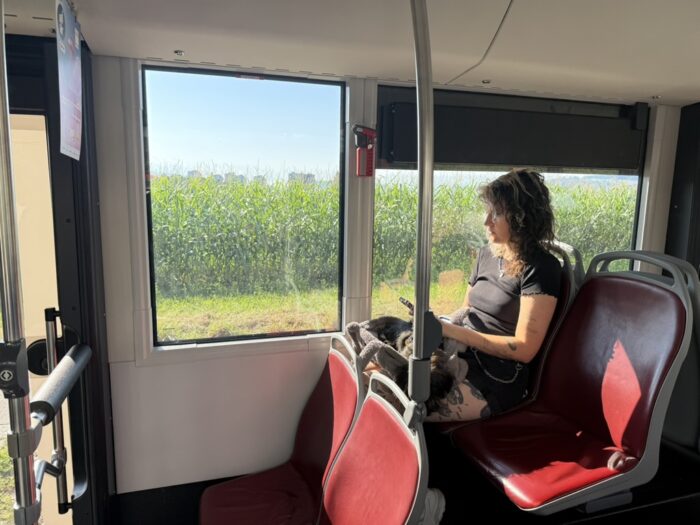
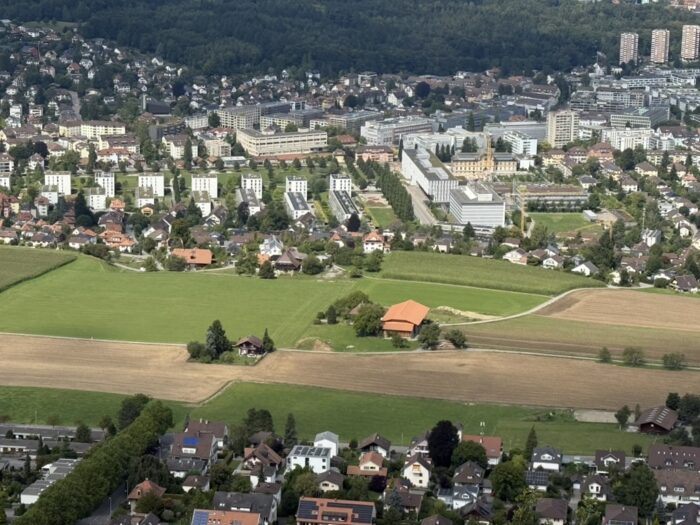
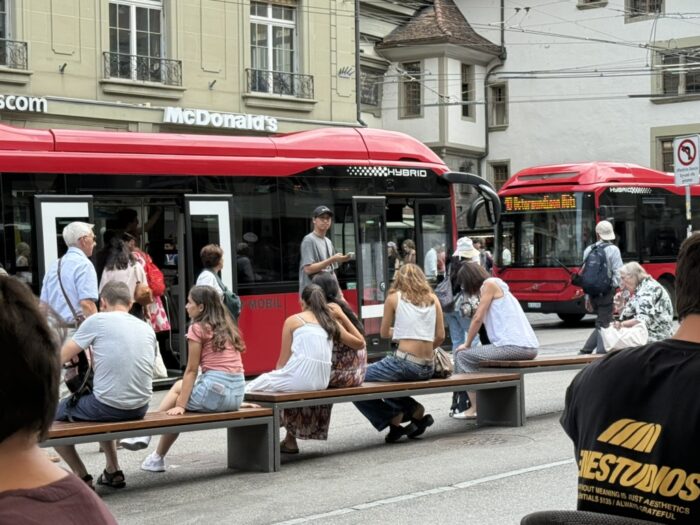
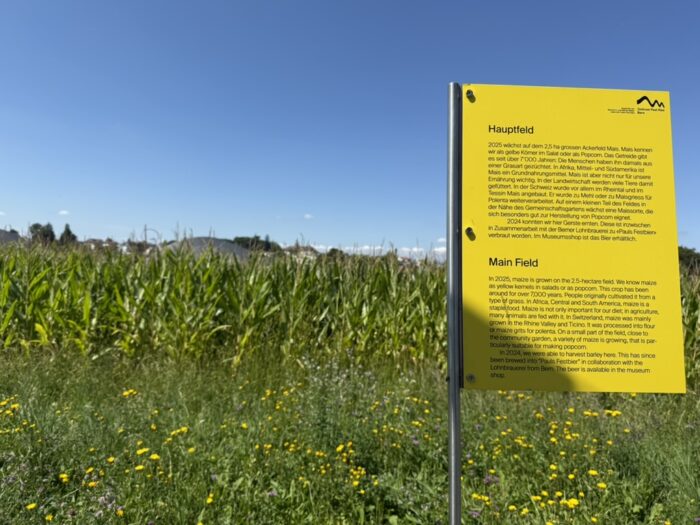
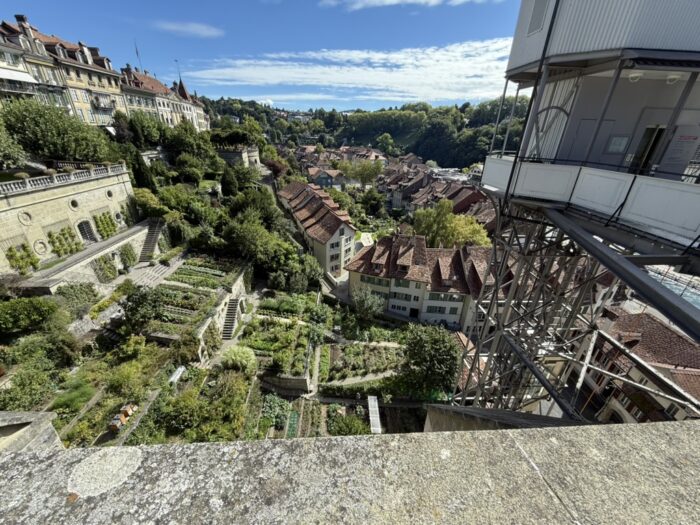

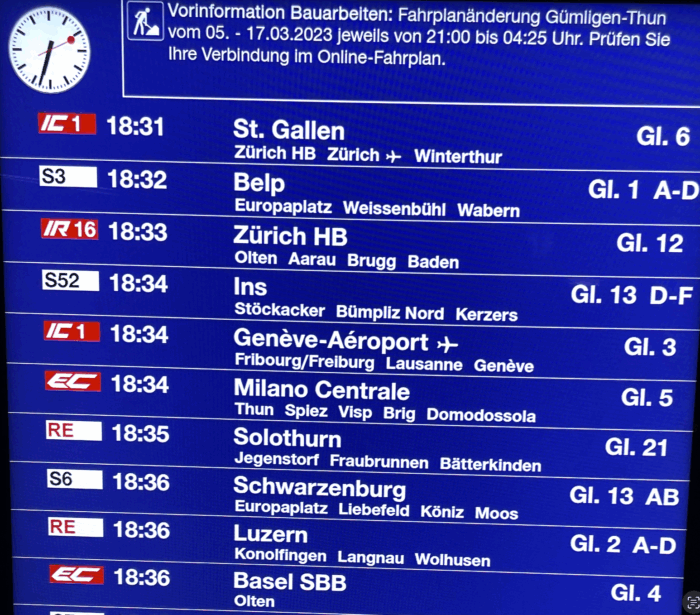
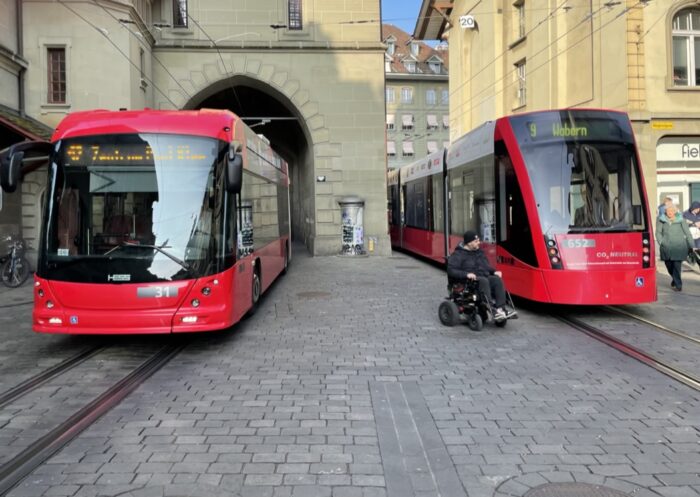
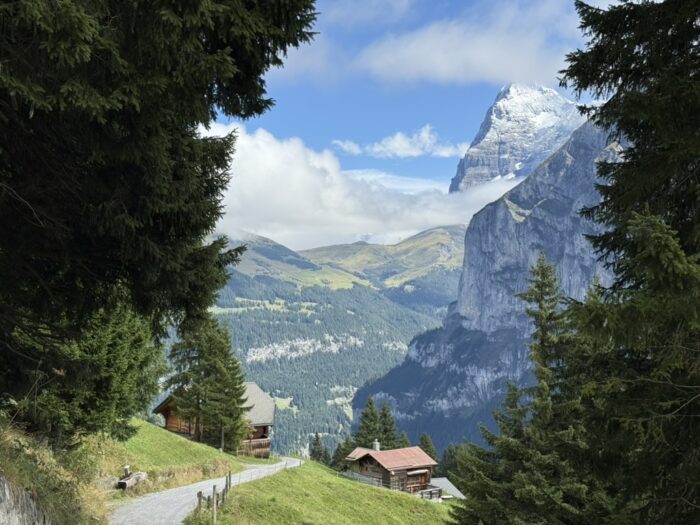
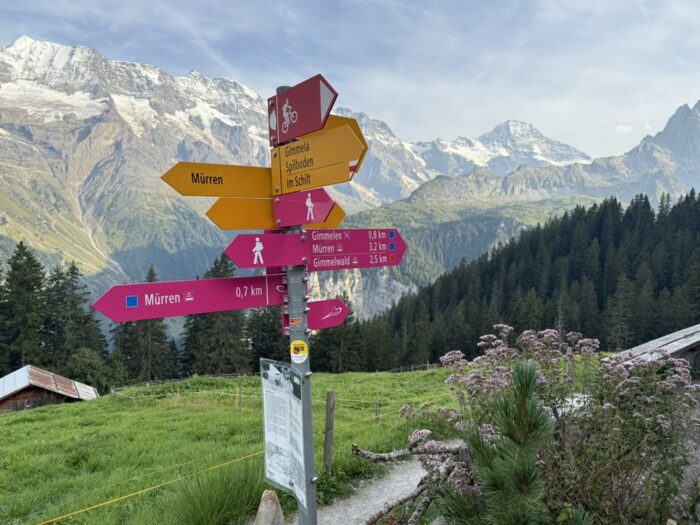
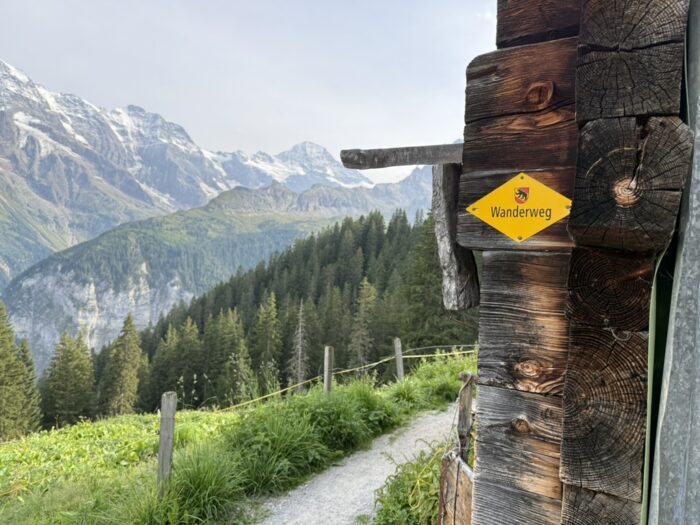
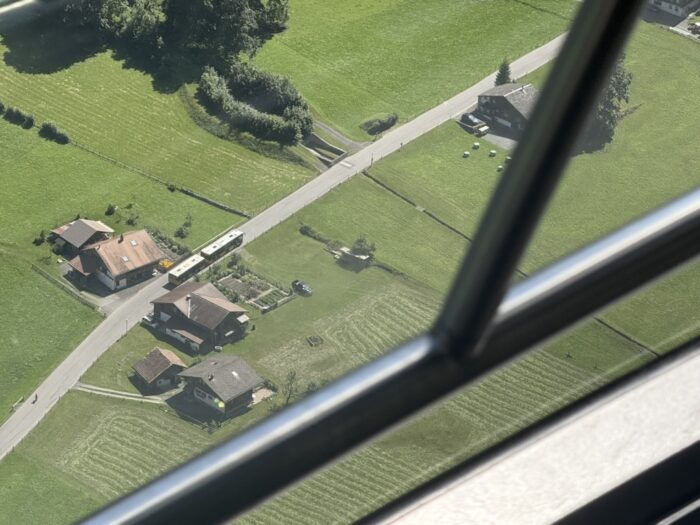
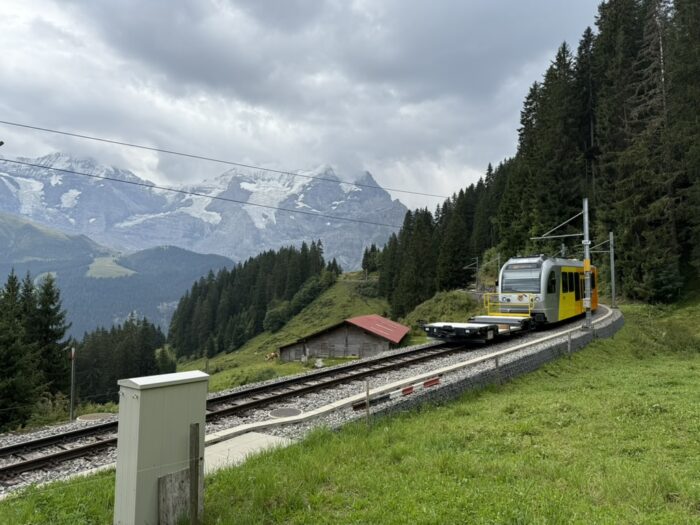
I was expecting a Jarrett Walker post but I got Rick Steves. 🙂
But seriously, this is a great post. Yes, it is important for American hikers to understand that it is hard to find wilderness in Europe (unless you are a mountain climber). In contrast it is easy to find wilderness in America (ironically as long you have a car). Areas that are officially Wilderness (note the capital ‘W’) can be found in National Parks, National Forests and BLM land.
But there is still great hiking in Europe. It is just different. You often feel like you are “getting away from civilization” only to round the corner and see a giant ski resort. Or a bunch of cows grazing.
One of the great things about hiking in Europe is the public transit and the huts. You can hike “hut to hut” with a light pack. There are also plenty of great day hikes. You can do all this on public transit. My wife and I have done quite a bit of hiking in Europe and we never rented a car. We never needed to. At worst we would have to wait a couple hours at a bus stop. The scenery was so pleasant we didn’t mind. Not only do you have trains, buses and funiculars but there are a lot of gondolas (that run in the summer time). It is quite different than hiking in the U. S. or Canada and quite enjoyable once you get used to the differences.
We did some hiking through farm land and to honest it wasn’t great. These are working farms. It didn’t help that they were spreading manure (with giant machines).
I feel like hiking in civilization is somehow more adventurous than just hiking through the wilderness. There’s a lot more that can happen. Imagine if Lord of the Rings was just them walking through wilderness, and had none of the civilization.
Ha, I feel the opposite. Most of my life — most of just about everyone’s life — is spent in places where people frequent. But being in a place where “man is a visitor” is very different and can certainly be full of adventure. You are more likely to see animals and places that are very different than what you are used to seeing (because people don’t dominate the landscape). I think if I wanted a walking adventure in the city I would stick to the city (and probably do most of my walking at night).
Having the money to spend is truely amazing! You can not only extend service to low-demand areas, but also establish plenty of dot-to-dot through services with decent frequency, on top of the high-frequency grid bus network which transit experts are recommending today! Truely HIGH ACCESS for each location!
United states has the money too, but not the political will. Switzerland has chosen to spend their money on creating great transit even in rural areas, which they should praised for.
But another reason why Switzerland has so great transit is that the mountainous terrain has forced settlements into narrow paths, which creates natural corridors for transit with fairly high ridership even where the density is rather low. By contrast, United States has most people living in flat areas with no such corridors.
>> But another reason why Switzerland has so great transit is that the mountainous terrain
Yes. Just in general Europe has way more “hard edges” (as Jarrett put it). There are cities of 100K that are really quite physically small. Sort of like you took a tiny section of Brooklyn and made it a city. Then you surrounded it with farms or forests. In the USA this is rare. We have cities of 100K that take up a huge amount of room. As you walk around it feels like a small town (just a few houses here and there). But they sprawl for miles with just enough density to add up to a lot of people but not enough density to make them easy to serve with transit.
Many of these sheep-wracked uplands are not at all healthy landscapes, and can generate significant landslip and flooding problems downstream. This does, I think, apply more to hilly-uplands than actual mountainous areas though – but you can see this very clearly in, e.g, Britain’s National Parks.
Wow – Bern is on my list to see! Stunning in so many ways. And it just happens to be partway between Paris and Venice.
It is not so that Switzerland provides a high level of public transit in rural areas because they are rich enough to be able to afford it. You will notice that even rural lines often run with articulated busses (or with trailers, like in the Bernese Oberland), so the demand is there. And the demand is there because the offer is there…
Public transit in the Bernese Oberland currently even suffers form overcrowding, and is therefore increasingly going to a 15 minute headway.
In the late 1980s I was on a college choir tour of Europe that ended with a week-long choir festival in St. Moritz and Bern. (See the world between rehearsals). Though I never hopped a train out of St. Moritz, I did hop a random tram in Bern, heading south and east from downtown past Muri-bei-Bern and Gümligen past the last suburban stops, then single track through countryside to a little castle town, Worb. Sketched the castle, went back to the depot, and took the other choice home. From the same stub-end station a red EMU with subway style doors took me due west on single track to Bolligen; double-track to Worblaufen where it joined …I thought a main line but sorta a branch passenger line; came into downtown from the northeast, underground to Bern’s central station. Both lines seem to exist today. It’s stuck with me as remarkable snippet of the larger Swiss network, harkening to vanished routes in my native Boston or adopted San Francisco (much more reliable than MUNI Metro and not hide-bound like BART).